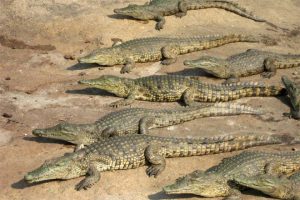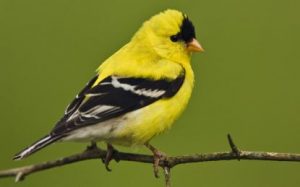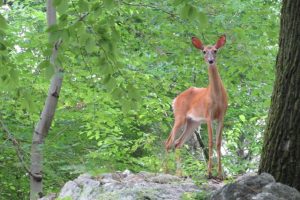

I have been thinking about those creatures that resemble each other so closely they seem twins—alligators and crocodiles, dolphins and porpoises, camels and dromedaries, bees and wasps, ostriches and emus. I like to imagine God imagining these subtle differences, having created an alligator and then wondering how it would look with a slightly more narrow snout or having breathed life into the honeybee and then considering a more slender and smooth version. Why stop creating, God might have asked, when variation is so much fun. I imagine God growing almost giddy with pleasure, shrinking a crow down into a grackel, flattening a deer’s antlers into an elk’s. And then there were all the furred patterns to consider, all the shapes of ear. God must have become fully engrossed, working right through lunch, the way some of us do when we are absolutely engaged with our work.

Variety, difference, diversity—for me, those are all words that ultimately mean pleasure. My breath catches those rare summer mornings when I glance out our kitchen window and see a blue bunting at the feeder. I feel stunned by its color, its flash. Often it will be accompanied by yellow finches which are also brightly stunning. They are impossible to overlook, but in paying attention to them, I find myself also paying greater attention to those other birds I’d classify as ordinary, the sparrows, the robins. These birds may be less startling, but they possess their own subtle variations, differences that require me to focus more fully if I am to notice them. The unusual birds startle me into attention, while the common ones require a more intentional habit of attention.
Some people might call this mindfulness, and I suppose it is. I slow down for a few seconds, aware of the life that surrounds me, before I re-enter the busyness of my overcrowded life. I vow to become less busy, to create enough space in my day to appreciate the creatures who wander across my yard and perch in the trees I sit beneath. Of course such a practice would be good for me, and I suppose it might also ultimately be good for the rabbits and deer and skunks since my attention is benevolent. My greatest concern, though, isn’t for me alone or even for each of the multiple other species I encounter, but for us—that great “us” that encompasses all of creation.

So often, I recognize that I have become detached from the world around me not through any overtly hostile act but through simple inattention. When I pay closer attention, I realize that I experience reconciliation with creation. I understand my place in the world more deeply. I live within the fullness of creation rather than apart from it. The more I attend to creation—even if only through a window—the more I appreciate it, and the more I appreciate it, the less harm I am willing to commit.
Will we human beings ever become fully reconciled with all of creation? Perhaps not. Perhaps our temptations toward dominance and exploitation will always prevail. But I am not willing to surrender to such a fate quite yet. We are created in the image of God, and the God who is our great creator is also our great reconciler. What if every morning we awoke and recalled who we are, images of God? What if we gazed out our windows, through the dangling icicles, and called them good? What if we watched the wild turkeys parading across the frozen fields and called them good? What if, as evening drifted down, we heard an owl swoop toward a field mouse and called it all good?
We can bless the world each day with our words and our acts. Why don’t we give it a try? Why don’t we even, perhaps, begin today?
————————————————————————————-
 Lynn Domina is the author of two collections of poetry, Corporal Works and Framed in Silence, and the editor of a collection of essays, Poets on the Psalms. She is a student at the Earlham School of Religion, where she has taken classes in the Ministry of Writing, and she currently lives in upstate New York. You can find out more at http://lynndomina.com .
Lynn Domina is the author of two collections of poetry, Corporal Works and Framed in Silence, and the editor of a collection of essays, Poets on the Psalms. She is a student at the Earlham School of Religion, where she has taken classes in the Ministry of Writing, and she currently lives in upstate New York. You can find out more at http://lynndomina.com .

1 comment
[…] I have been thinking about those creatures that resemble each other so closely they seem twins—alligators and crocodiles, dolphins and …read more […]